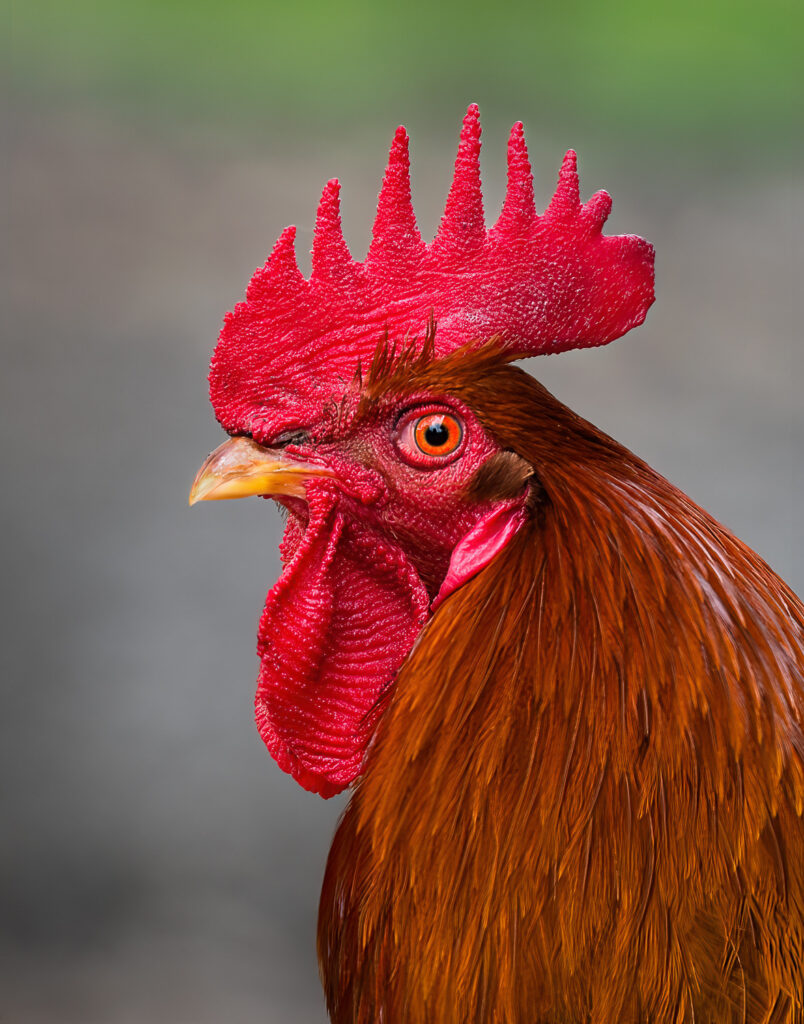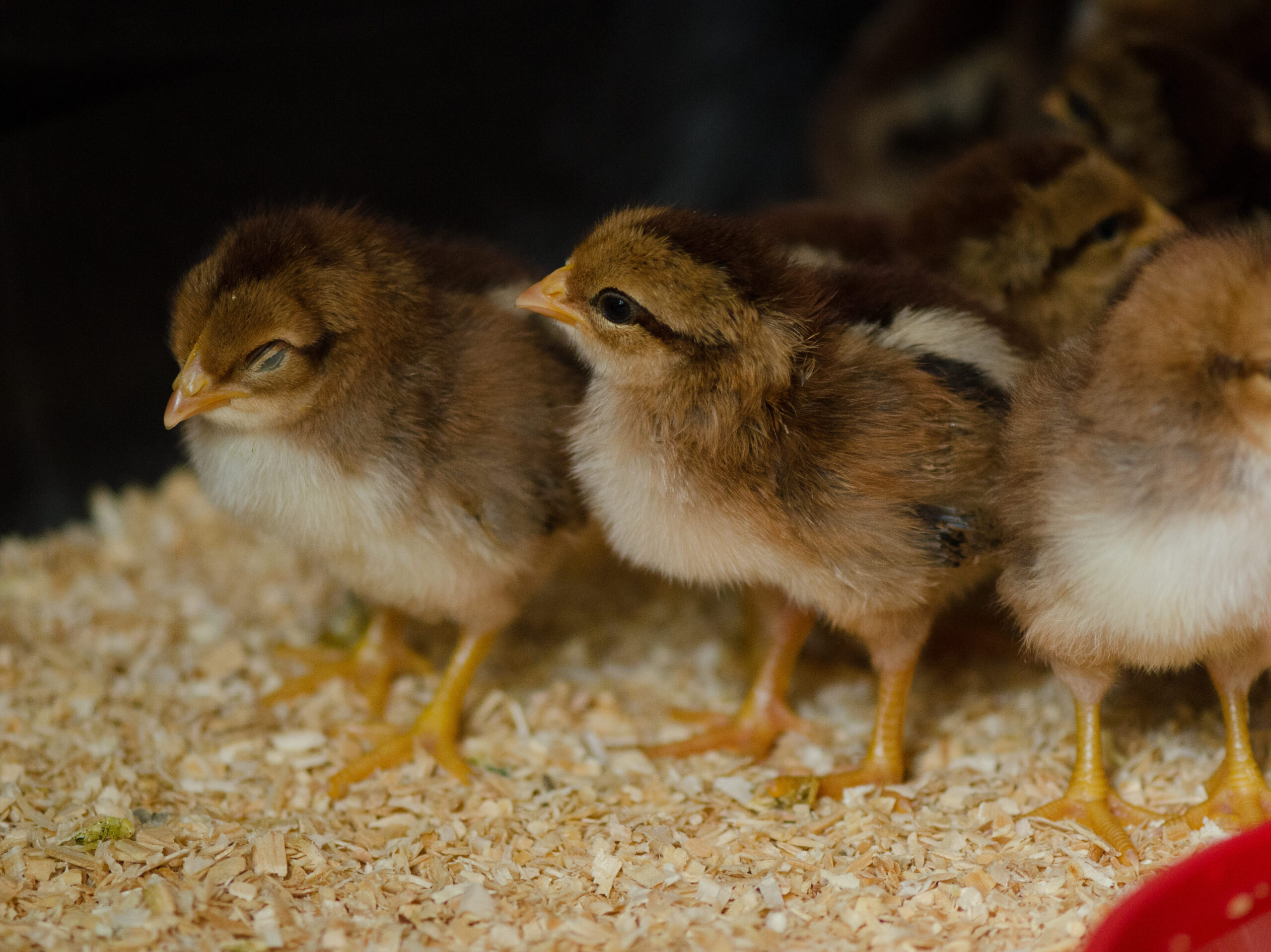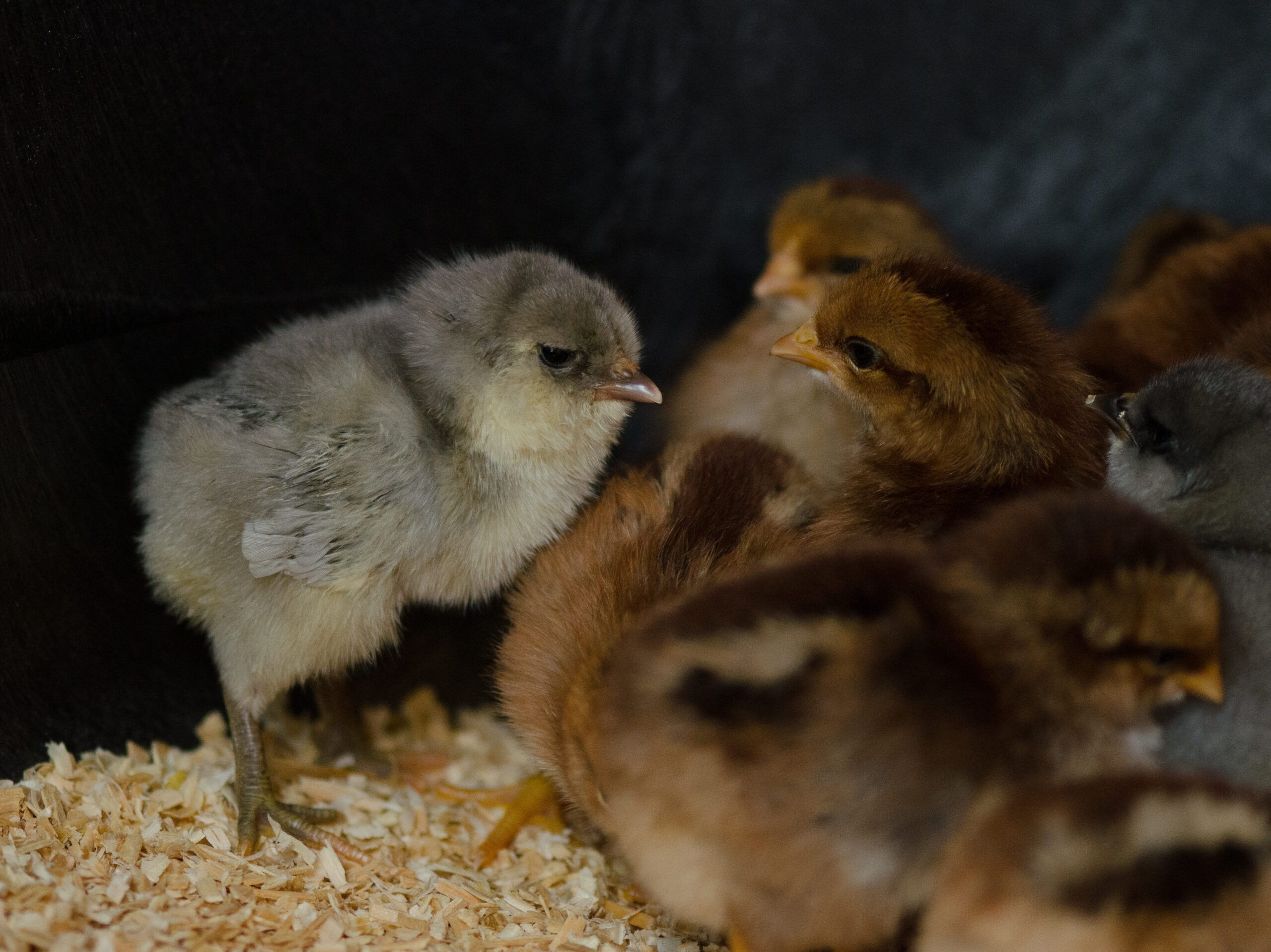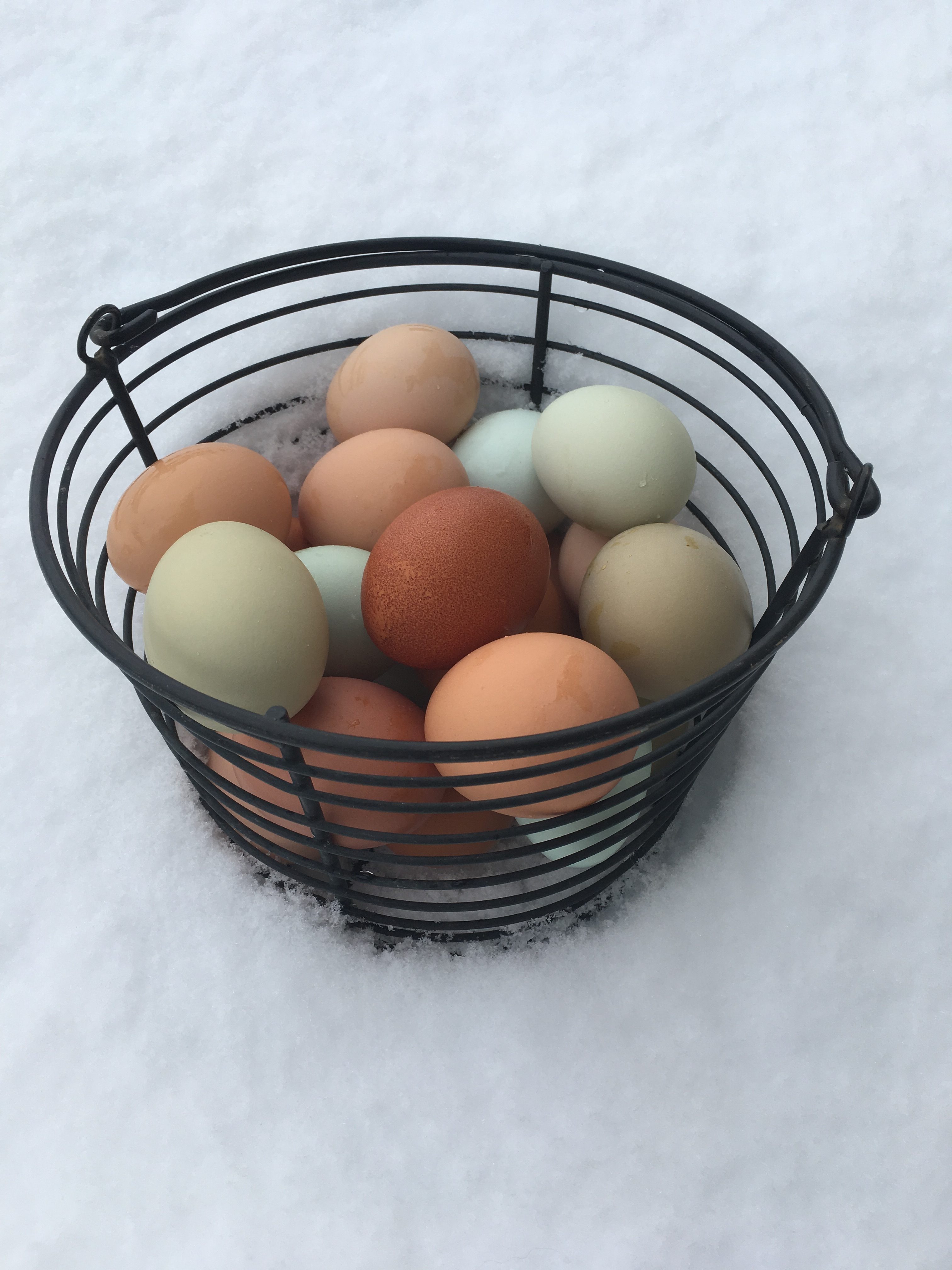A variety of breeds of chicken, all suited to a free-range existence, provides us with a colorful egg basket.
Most of our chickens come from a Maryland NPIP (National Poultry Improvement Program) farm (Deer Run Farm) committed to raising quality breeding stock in an environmentally sustainable manner. Their chickens are subjected to rigorous health testing – they have good reason to be regarded as raising “the healthiest flock around”! Welsummer chickens originated in the Netherlands; the hens are brown with golden feathers on their necks, laying chocolate-brown eggs, while the roosters have gorgeous reddish neck plumage, large combs, and may be familiar to you as the “Cornelius” rooster in Kellogg’s Cornflakes. Our roosters take good care of their ladies, hustling them into the roosts (hence their names) within the coop at sundown, and protecting them against predators during the day. Ameraucanas are a distinctly American breed; ours have black or gray to white plumage, small combs, and lay blue-green eggs. We also have a cross between the two; this cross (a type of “olive egger”) lays a light olive green egg. Other hens in our flock include red sexlinks and Delawares, laying the more familiar light brown egg. Our egg baskets are very colorful!
The demand for our eggs often outstrips supply, but please contact us if you’d like us to provide you with eggs. As of the present writing (2024), we are asking $5 per dozen for “large” (or extra-large) eggs, and $4 per dozen for medium eggs.

One of our young Welsummer hens (3 months old, not yet laying)

An adult Welsummer rooster, protecting his flock

One of our young Ameraucana hens (3 months old, not yet laying)
On average, each one of our chickens has access to more than 1,500 square feet of pasture. Compare this to the “five square feet per chicken” advertised on packages of commercial “pasture-raised eggs” in the supermarket!

Young female Welsummer chick (center), flanked by male chicks; note her pronounced “eye liner”

Young male Welsummer chick; both males and females have “chipmunk” stripes on their backs. Note the less distinct “eye liner” on the male that terminates at the ear.

Young Ameraucana chick (on left)
